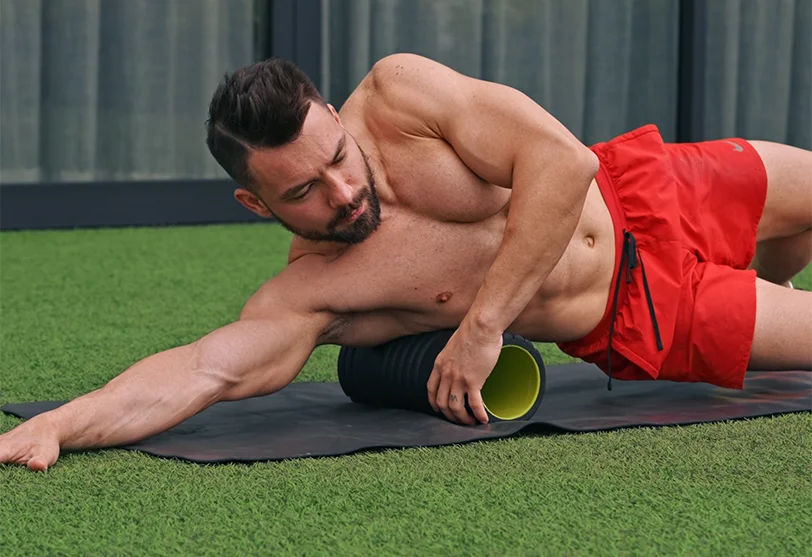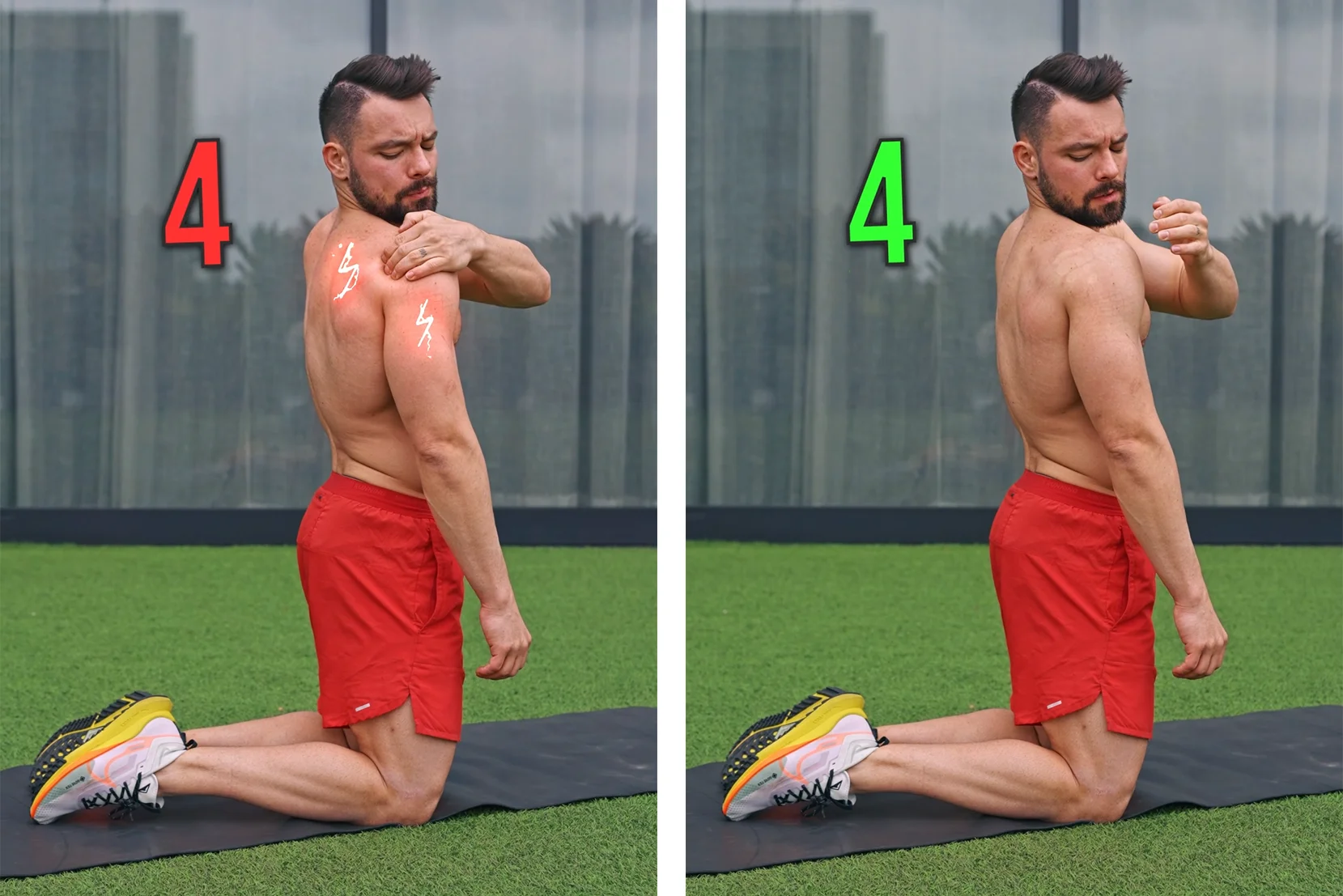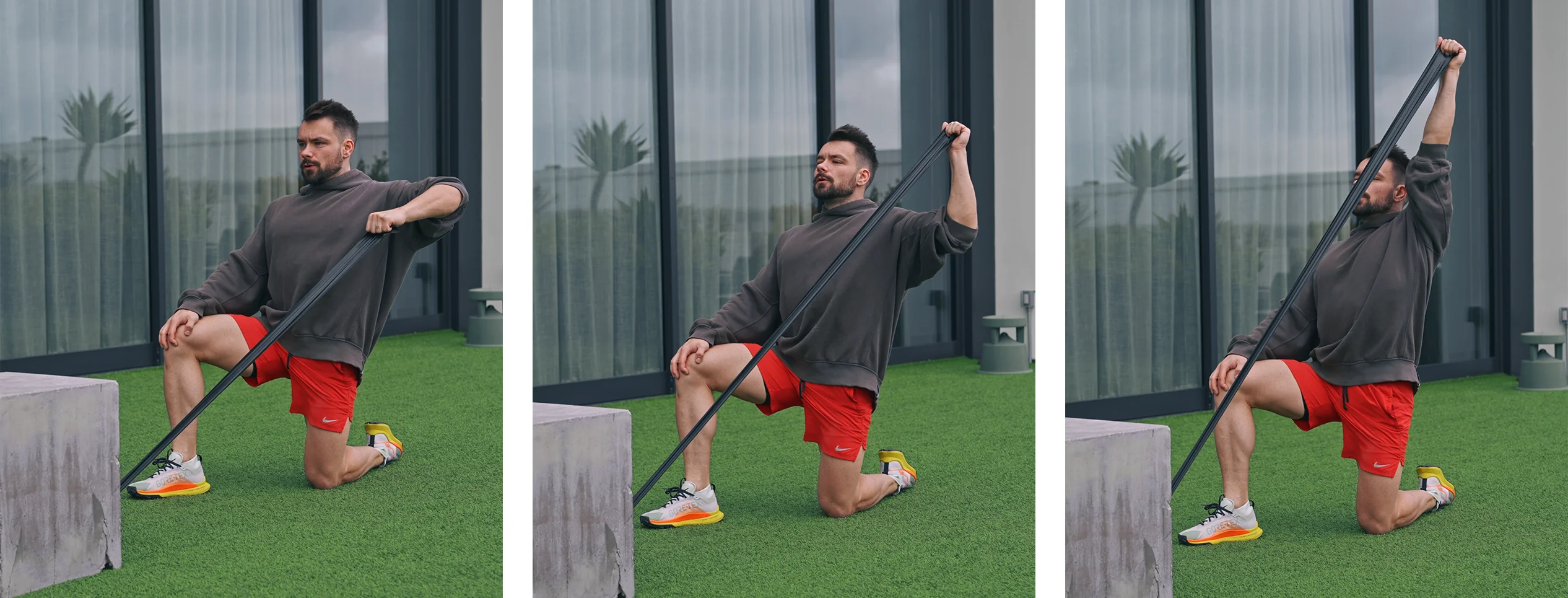Myths of training related injuries
There is lots of crazy bro science out there. It is your responsibility to cut through the dust and make your own decisions to what you believe and who to trust. I love sharing and hearing opinions but the more I’ve traveled and trained with different world class coaches and athletes the more I learn to appreciate that when it comes to basic health and injury prevention the lines really aren’t that blurry.
No Pain no Gain
Many athletes and unfortunately even coaches will tell you that injuries are a regular part of training. This is straight up wrong. I’ve been training, competing and performing my entire life. I’ve done well over 1000 shows with up to 4 performances per day for limited periods of time. For many years early in my career I was one of the most skilled powertrack performers on the market and for the longest part of my career I was the most technical hand balancer in the business yet I never got injured.
Most injuries can be avoided and happen due to poor planning or irresponsible lifestyle choices.
FREE SHOULDER STABILIZER ROUTINES
Get my 2 favorite protocols to prepare your shoulders for any pressure you might plan to put on them.
An injury is the end of your career
I grew up believing this. The older I get and the more modern medicine advances the more fascinated I am by the research being done. I have multiple fellow athletes and performers who have had countless big injuries and surgeries. They did the work, went through recovery and got back to what they were passionate about. Most of them even at 100% of their previous intensity.
Yet, keep in mind that every single one of them would have rather not missed the year of training and would have preferred to stay healthy!
Injuries happen and from my personal experience nothing is for ever. If something is holding you back work on it. You will recover and overcome your obstacles. Let passion and your doctors advice be your driver!
Bullet Proof your Body
A bullet proof vest is supposed to make you invincible. Bullet proofing your shoulders or wrists should mean that you can never get injured.
Your body will never work like this. You can work hard and smart using the methods described below to make your body stronger and more resilient to injuries but you will for ever have to pay attention and work carefully.
The most important take away when it comes to bullet proofing routines is that your body is unique. What exactly works for you will not work for other and your friends injury prevention routine will not 100% be right for you.
This is why it is so important for you to research and learn about how to protect yourself from pains and injuries to be able to create your perfect routine and especially to make adjustments to this routine as you go along.
Your training, lifestyle and age evolve constantly. A responsible athlete knows to tweak and to adjust their workout plan accordingly.
Most Common Reasons
for Shoulder Injuries
A great way to determine how to avoid to get injured is by understanding what actually injuries us. We can bring it down to 3 main reasons as to why people hurt their shoulders during training.
Lack of Warm Up
At the very top and the most common reason for shoulder injuries that I see in athletes is a lack of warm up. Be honest. How many times did you walk into the workout space during a warm summer day already sweating from the road there and simply jumped in without properly preparing each joint of your body?! A proper warm up is so much more than just feeling warm or sweating lightly with a raised heart rate.
A warm up must include prehab exercises for the shoulder joint in all directions, stretches, activation work and easy progressions of what ever skill you are about to work on.
Poor Movement Quality or Form
Competing for the first place on the list and close behind we have poor form or technique. This can happen because you don’t know better, due to fatigue, a too elevated technical level, distraction from fellow athletes or any kinds of outside or inside stressors.
Fact is: if your form is off you can not use your muscles to their fullest potential and you might be using muscles not intended for this amount of pressure causing your to get hurt. Take the Planche for example. If you lose protraction too much and your shoulder blades stick out you will not be able to use your shoulder joint to it’s fullest potential. The chest won’t be able to take parts of the load and you will overload your anterior deltoid and biceps.

Lack of taking care of shoulders
You are expecting your shoulders to perform like a racing car but you are treating them like I treat any car I ever owned. (I know the difference between regular gas and oil and I can proudly spot a flat tire 😉 )
A racing car needs care. Your shoulders need care in order to perform at their best. Your wrist swell up you ice them. If your back gets sore you might get a massage or physio treatment. If you run a lot you (hopefully) invest into new shoes semi regularly to protect your feet.
When is the last time you have actually done something for your shoulders? They do so much for you! Pay them back every once in a while and show them some love. In return they will be stronger, more mobile and healthier!
Listen to your body
to avoid getting injured
The real problem is that most of us tend to ignore a small issue until it is an actual problem. By listening to your body you can see pain coming a long time ahead and avoid many or even most injuries.
The goal has to be to spot sore points before we really get into train. Imagine your anterior deltoid is sore and tired. You jog to the gym in the summer. You are sweating, you feel ready, you jump up and straight away go for a Handstand Push Up, overhead press or what ever you are training that day that involved the shoulder muscles. You exposed your muscle to a much higher pressure than what it is comfortable taking that day and BAM you are injured.
Spotting possible injuries before exposing the muscle to excessive pressure must be at the highest priority and should be a core part of your shoulder prehab routine.
Spot Pain During Warm Ups
Coming back to cause of injury number 1: improper warm ups. As discussed above the warm up should not just warm you up but also prepare your joint in all possible directions. This preparation will not just help you build the small stabilizing muscles needed to keep your shoulder joint in place but it will also precisely show you where you might be sore and which rotator cuff muscle is getting a little angry.
With far over 1000 shows performed in my career this was the key method on how I stayed healthy. Every single day, sometimes even twice a day, before every training and before every show I would work my shoulders with low pressure in all anatomical directions. This would be one of the only times of the day when I am dead focused. It is hard for me to focus and I am distracted easily but here I would not let anything get between me and my brain becoming one with my shoulders. These are the 5-10 most important minutes of the training. Feel every muscles and every engagement. If something hurts that didn’t hurt yesterday you know something is wrong.

Spot Pain At Home
Prehab does not just happen at the gym. The higher your work load and the harder you train the more this daily workout will turn into a complete lifestyle.
Foam rolling and pressure massages can be a great way of spotting a possible injury early. A doctor once told me that a completely healthy muscle does not hurt under pressure. Now… I think we can all agree that this is an unrealistic experience for an athlete but the man had a point!
Your muscle should not hurt when you push on it. Picture yourself rolling your muscles when they are relaxed and recovered compared to rolling them when you are REALLY sore.
Coming to the next problem rolling the shoulder is not quite as obvious and can be a bit tricky from times. Instead use your fingers and push onto your shoulder muscles. If you find a sore spot stay on it and repeat the 4sec contract-relax-cycle. If the discomfort does not improve and your muscles do not loosen up something might be going south. Proceed with caution.
What to do
when we feel pain
Let’s say you trained and you warmed up or pressure massaged at home, you became one with your shoulder and you realized something feels off today. This is great. You spotted the issue early. Now the question is: how do we proceed from here?!
Do not panic – Pain does not necessarily mean injury
Possibly the most important thing to keep in mind here is that not all pain means you are injured. Pain is extremely complex and just an indication that something is happening. When you train hard and get sore you are in pain but not injured. Keep pushing harder through soreness and you might get injured eventually. When I was 13 I was in a very high level gymnastics program. Only problem was that I hated it. I was looking for a way out so I faked an injury. I pretended my back hurt. My mom took me to the specialist. I was crying a lot etc. (I really wanted out of gymnastics practice) and the doc actually found a severe injury in my back. It was at some point between me faking and the doc starting injections etc that I truly believed I had pain. This pain started to be so bad that I couldn’t breath or even feel my legs from time. Eventually I was allowed to leave gymnastics and start a different career in performing arts. Day 1 of training the same thing at a different gym and all pain went away. Turns out my injury was very chronicle and mental.
So yes, pain is extremely complex and pain must be taking seriously at all times. Even if repeated ignoring of pain might magically not destroy your joint it will wreck you mentally. Pain is a part of progress but injuries are not!
Analyze your pain
Do you have some tiny pain during your warm ups? Warm up more. Did the go away? Yes?! Great, train with elevated caution. If the pain did not improve we have to adjust the workout. The next 100 workouts are surely more important than todays training.
If regular every day movement like pulling the blanket up at night or putting your shoes on begin to hurt you have failed in your mission of injury prevention and you need to begin to make drastic changes to your routine and lifestyle choices. At this moment it is vital to accept that we are injured and to start protecting our longterm health.
Reduce training intensity
The first step to prevent your small pain from getting worst and from turning into an injury is by simply reducing your volume and intensity. Let’s say your shoulder is in pain. You are not sure yet if it is hurt or sore. Either way something is up. Doing a lighter workout will help you stimulate the involved muscles. Some training is better than no training at all in terms of progress and a light training can help carrying out the lactic acid leaving you less sore.
Stabilizer work
Honestly, this one shouldn’t even be on this list. Working your shoulder rotator cuff with elastic bands should have nothing to do with you feeling shoulder pain. These MUST be the core of your every day shoulder warm up. I promise to you, 10 min a day will changer your life!

Ice therapy
This has been a game changer for me, fellow athletes and all clients. When ever pain is coming or even when intensity is high put ice on the worked joint after training. This will promote blood flow and help carry out inflammation.
DISCLAIMER: There is some modern research that does not exactly support the idea of icing your joints. Ice has been a game changer from my personal experience. Always speak to your doctor or physical therapist before blindly trusting some dude on the web 😉
Seek professional health
If your pain is not improving after 2 days or you have pain in regular every day life activities go see a doctor. Go get professional health. Do not snooze on this! You wouldn’t continue to drive your car with a flat tire! I have and well… it didn’t go well for my poor little Volkswagen.
You only have 1 body. You need this body to support you and what you do for countless years to come. Please, be responsible and get help! If you do not have access to medical care where you are consider traveling or find help from certified specialists online.
How to protect the shoulders from pain
This is the question that most of us care most about. What are precise actions that can be taken to reduce the chances of ever feeling pain in the shoulders.
Keep in mind that training will leave your shoulders sore and pain is complex. There is no such thing as a pain or discomfort free athletic lifestyle but there are multiple things that you can do to actively support your shoulders to stay healthy longer.
Train a wide variety of shoulder movements
By training not just the specific pushing muscles that you might need but all muscles involved in your shoulder joint you will create stability through out your entire joint.
The working muscle is called the agonist and the opposite muscle the antagonist. As the agonist tenses up the antagonist needs to hold against to stabilize the joint. Picture for example your pushing muscles being overly strong. Your pulling muscles won’t be able to hold your joint in place and you shoulder could potentially get hurt.
Anticipate these problems and reduce their likely hood by training your shoulder in all directions!
Keep your shoulders balanced – stretches and/or strengthen
Life is all about balance. A well balanced body is a healthy body. Yet, finding this balance is never easy. How much of a certain food does your body need under which lifestyle, what is a healthy work-life balance? How flexible should your shoulders be compared to their strength level?
As always there is no black and white answer here. Depending on what you focus on and depending on your goals this balance will likely shift and your strength and flexibility level will likely almost never be equal.
Deciding on how much time you invest into stretching vs. conditioning is up to you. Most athletes are naturally more prone to be strong or flexible and certain directions. The goals should be to stretch more where you are overly stiff and to stabilize and condition where you are weak.
Learn to breath during movements
Many injuries happen due to lack of experience, stability and especially mastery of movement. If you are continuously performing exercises that are too hard for you chances are high you will get injured.
How do you know if an exercise is “easy enough”?! Again, there is no direct answer here. You want to make sure you can perform more than just 1 rep per set and that your form factor is high.
A perfect indicator for being the master of your movement is being able to breath. You don’t necessarily have to be able to breath continuously throughout the entire movement as you want to brace in moments of high pressure but being able to get some air and especially having the mental capacity to focus on breathing will help tremendously.
Focus on stabilization muscles
I am not sure how many more times I can say this. Focus on your stabilizing work! External and internal shoulder rotations and all small shoulder rotator cuff movement directions must be at the core or your shoulder health protocol!
When working on these focus on form, film yourself and get help from outside eyes. These have to be high quality every day!
You also want to make sure not to use too much resistance. Your shoulder rotator cuff muscles are small. If resistance gets too high these tiny stabilizers simply turn off and let bigger muscles take off. Yet, in these kinds of exercises your resistance will never be high enough to actually train the bigger muscles. Therefore it is essential that pressure stays low!
Injuries are not a part of training and of progress. Injuries happen when you are careless, distracted or not well informed. I am not in charge of you and especially as an online coaching I have very little direct power over your training.
If you spend time on my page, read my articles, train with me or simply browse through my images to get inspiration for your own workouts you owe me this much:
Pay attention to your body. Listen to your shoulders. Be kind to your shoulders. Make smart decisions and dominate your goals!






